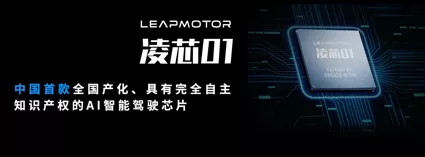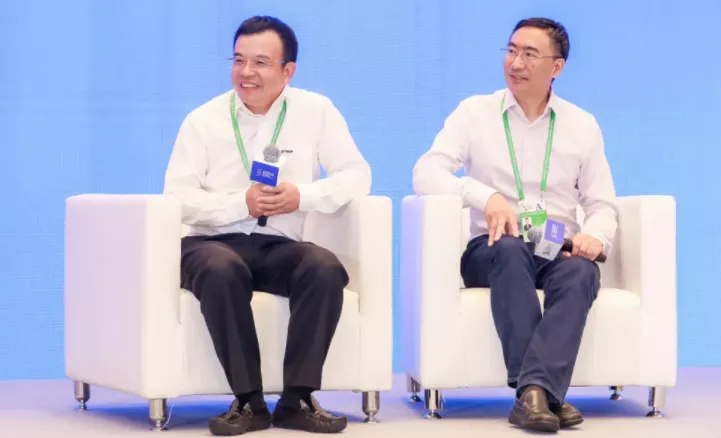Introduction: Choosing new energy means being questioned. Instead of worrying about these doubts, it’s better to focus on chip technology.
On September 28, Liangdao released its third vehicle, the C11, with three configurations ranging from 159,800 to 199,800 yuan after subsidies. With the size of a mid-size SUV and the price of a compact SUV, the C11 packs a punch against its competitors such as the WmAuto EX5, XPeng G3, and NETA U Pro under the name of “price butcher.”
High-end configuration and low price have always been Liangdao’s strategy since T03, and the success of T03 has given Liangdao the confidence to believe in the market prospects of the C11. It is reported that the C11 has 6,000 pre-orders, and the feedback from some of Liangdao’s shops in Shanghai also shows a good market response for the C11.
Liangdao believes that the launch of the C11 marks its leap into the era of 2.0 and its full entry into the first camp of new car makers. Considering the popularity of T03 and the potential of the C11, Liangdao’s future is undoubtedly promising. However, in the face of the vast wave of the times, the discussion of the success of the C11 seems insignificant compared to the Lingxian 01 chip it uses.
The biggest difference between the C11 and all other Chinese new energy vehicles is that it is equipped with the Lingxian 01, China’s first fully domestically produced AI intelligent driving chip with complete independent intellectual property rights. In 2021, the world is shrouded in a shortage of chips due to the US crackdown, and China’s chip shortage is particularly severe. In such an environment, Lingxian 01 and the C11 have gained a sense of patriotic significance and mission.
Lingxian 01, a champion of “Made in China”
The first time Liangdao announced its foray into chip technology was at the 2018 Asia Consumer Electronics Show. Liangdao announced that its first domestically produced AI automatic driving chip, the Lingxian 01, developed in partnership with Dahua Technology, had entered into the integrated verification stage and was tentatively scheduled to be tested on real vehicles in the second quarter of 2019.
At the release conference, Zhang Xingming, vice president and general manager of the R&D Center of Dahua Technology, was invited to present. He explained that the name “Lingxian” and the code “01” were given in hopes that the chip will soar upward like the Lingyun and surpass foreign counterparts, bringing pride to the Chinese people in the field of automatic driving and championing “Made in China.”According to Zhang Xingming, due to Dahua Technology’s decades of experience and accumulation in the field of chips, the first domestically-produced AI autonomous driving chip “Lingxin 01” has six major advantages:
-
It has the ability of AI deep learning, and with the increase of time, the chip will become “smarter”.
-
The computing power has reached the leading level in the industry, exceeding the mainstream chips on the market by more than 5 times.
-
It is specially developed for automotive autonomous driving, with more accurate and clear positioning, meeting the actual scene requirements of autonomous driving.
-
Under the extremely strong computing conditions, it can realize multi-chip flexible combination combat.
-
The cost is controllable, achieving same or even stronger performance with less cost.
-
It adopts domestically-produced CPU, with independent strength, and is more safe and controllable.
On October 27, 2020, Leapmotor announced at its “Autonomous Chip, Smart Driving Future” Intelligent Driving Chip Industry Development Forum that the first completely independent intellectual property intelligent driving chip in China – “Lingxin 01”, developed by it, will be first installed on Leapmotor’s first pure electric high-end SUV model, Leapmotor C11.

From the information disclosed at this press conference, the Leap Pilot 3.0 intelligent driving assistance system installed on C11 uses two Lingxin 01 chips with a computing power of 8.4T, which is 3-4 times that of the existing Mobileye EyeQ4 solution. Leapmotor displayed a comparison chart of computing power on site, showing that Lingxin 01 is at the mainstream level. For this self-developed core chip, being not backward is the most important.

In addition to Lingxin 01, Leapmotor also revealed that almost all the core chips of the entire ADAS system of C11 are domestically-produced. In addition to chips, the Leap Pilot 3.0 intelligent driving assistance system equipped on C11, including core technologies such as algorithms, perception, and data, are all self-developed. In June of this year, Leapmotor’s algorithm team won the first place in the Google Waymo Autonomous Driving Algorithm 2D Performance Challenge.
Due to the fact that Dahua’s chip department was targeted by the United States and was forced to cut off its arm, Zhu Jiangming, who knows the interests behind the chip well, chose to self-develop or use domestically-produced chips from the beginning in order to kill Leapmotor’s chip crisis in the cradle. Zhu Jiangming said at the press conference that only by self-developing core technologies can greater freedom be brought in the future.
“Zhu+Fu” New MissionClearly, the development of the InCore 01 chip was not a task that could be completed independently by AIWAYS, a six-year-old newcomer, but was developed jointly with Dahua Technology behind the scenes. In terms of division of labor, AIWAYS provided the functional architecture requirements while Dahua was responsible for the specific implementation. Therefore, the level of the InCore 01 chip to a large extent depends on Dahua’s ability to design chips.
According to information, Dahua established its chip team in 2003 and has been in existence for 18 years. However, due to US sanctions, Dahua just recently spun off its chip design business. According to Fu Liquan, Chairman and President of Dahua Technology, during Dahua’s heyday, 40% of its chips were developed in-house.
Although Dahua’s chip business has been spun off, over ten years of R&D experience and the technology talent it has cultivated cannot be erased and remains its true strength. It is reported that Dahua has more than 10,000 engineers, over 8,000 of which are R&D personnel, including over 1,000 AI algorithm engineers.
Last year, the Volkswagen ID series suffered from serious software problems, stemming from the underdeveloped internet industry in Europe and a severe shortage of software talent. Dahua’s reserve of talent is an important support for the development of the chip by Dahua and AIWAYS, as well as the confidence for AIWAYS to persist in full-stack self-research.
At the event, Zhu Jiangming stated that AIWAYS had already developed full-stack self-research capabilities in core technology areas, including intelligent driving, intelligent cockpit, intelligent drive system, vehicle controller, and battery, and advocated for “no dead ends in core technology areas.”
According to media reports, on September 27th, at the 2021 World Internet Conference’s Wuzhen Coffee Meeting on Cars, Zhu Jiangming and Fu Liquan sat together once again. Although it is well-known that the two are longtime entrepreneurial partners, this was likely the first time they publicly discussed cars together.
Six years ago, Zhu Jiangming founded AIWAYS and embarked on car manufacturing. Six years later, Fu Liquan boarded this old friend’s train and entered the automotive industry. The reunion of “Zhu + Fu” is expected to restore Dahua’s glory at AIWAYS, and the development of the InCore chip will continue to move forward. The final competition for intelligent electric vehicles is the competition for autonomous driving and chip technology, in which AIWAYS is leading the charge.
Due to chip shortages, NIO’s display cars have sold out and can only display car models. In light of supply chain constraints for chips and other components, NIO and Xpeng have begun to lower their sales targets for the third quarter. With the chip scarcity ongoing, if China’s intelligent electric vehicle industry wishes to forge ahead, it must solve the chip problem. Currently, only AIWAYS is taking on this heavy responsibility, and the market urgently requires the InCore chip.
AIWAYS has previously revealed that the InCore 01 chip will be made available to the market for cooperation in addition to being used by AIWAYS. However, the specific time frame for this has not been announced.
 In July this year, at the launch event of LI ONE 2.0, Li Xiang’s founder, chairman, and CEO, Li Xiangming, called for the goal of surpassing Tesla in three years. As this goal seems too ambitious now, Li Xiangming once again faced skepticism from the industry. This time, with the launch of the LI C11, Li Xiangming openly expressed his thoughts and responded to the doubts by saying “to everyone who is not taken seriously.” This seems to be a response to the doubts.
In July this year, at the launch event of LI ONE 2.0, Li Xiang’s founder, chairman, and CEO, Li Xiangming, called for the goal of surpassing Tesla in three years. As this goal seems too ambitious now, Li Xiangming once again faced skepticism from the industry. This time, with the launch of the LI C11, Li Xiangming openly expressed his thoughts and responded to the doubts by saying “to everyone who is not taken seriously.” This seems to be a response to the doubts.
In fact, there is no need to worry. Choosing to work with new energy sources means walking together with doubts. Instead of being entangled in these doubts, it is better to focus on the issue of chips with all our strength. Instead of being troubled by doubts, it is better to enjoy them. Don’t forget that part of attention is paid to skepticism. Without attention, there will be no progress. Entrepreneurship is not only the opening and upgrading of careers but also the enlightenment and broad-mindedness of ideas.
This article is a translation by ChatGPT of a Chinese report from 42HOW. If you have any questions about it, please email bd@42how.com.